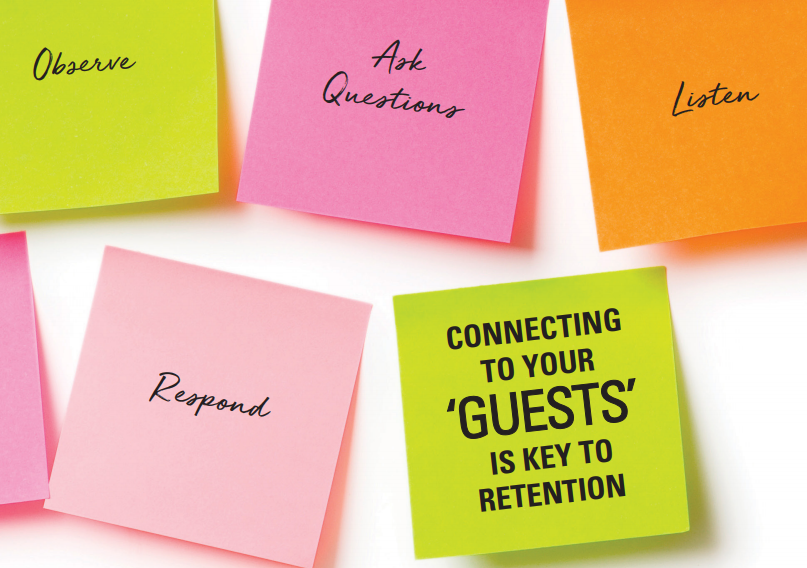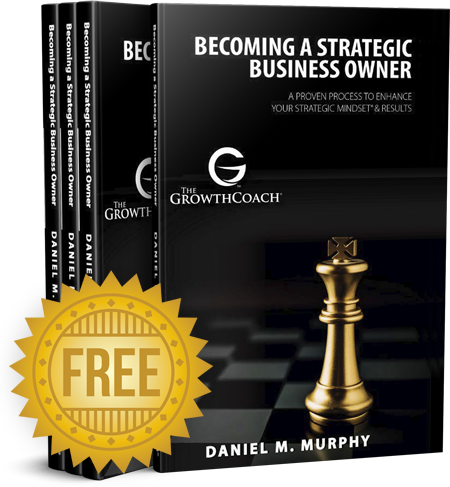Do you know that 90 percent of our purchase decisions are made with our hearts, not our heads?* Is it not too far-fetched then to think that how we treat our customers might actually be more important than the products and services we sell?
Retaining customers is the single most cost-effective way to grow your revenue, yet so many companies forget to think of their customers when making important business decisions.
In the Age of the Customer, successful companies recognize that the mix of exceptional service and products has shifted, without material investment in technology, manufacturing or other shiny widgets. If it’s not with a shiny widget, then how do you maintain customer loyalty? Let’s start with the question: Do you know why your customers come back each season?
UNDERSTANDING YOUR VALUE PROPOSITION
First, you need to know your own company. For decades, many companies took an arrogant approach to customer expectation management. Not too long ago, Research In Motion (RIM) built and sold millions of Blackberry devices that could send text messages and emails, search the internet and make phone calls. However, RIM was not listening to their customers’ changing needs or anticipating their demands.
Customers wanted features such as a camera, music and other applications they could select themselves and customize. They wanted a device they could build to match their personality and lifestyle. Apple introduced the iPhone and priced it at $499 ($269 more than a Blackberry at the time). Both had phone and email capability, but Apple allowed its users to have a simplistic design, highly customizable apps and provided exceptional service. In short, Apple thoroughly understood their value proposition to their customers.
Understanding your value proposition to your customer is critical. Do not assume you fully understand this — it changes quickly and often with little warning. However, being connected to your customer will provide the intel you need.
WHAT ARE ‘GUESTS’ SAYING?
I’d like to challenge you to no longer consider your patrons, employees and vendors as “customers.” As the Age of the Consumer continues to grow and influence service delivery, more and more customer-centric leaders reference these individuals as “guests.” In all reality, they really are guests at your facility. The logic behind this is that when we invite someone into our home or workplace, we want them to feel welcome, valued and appreciated. This is the entire premise for having friends over for a barbecue or gathering. When we start treating our employees and customers as guests, those same feelings will carry over to them.
Remember – how you make someone feel is what they will remember. Get to know your guests. Who are they and what are they saying about the services you offer? There are countless books out there to discuss personas (different types of guests), journeys (the collection of experiences with you), segments (groupings of personas) and so on, but at the end of the day, who is it that pays your bills and why? By no means does this need to be a formal, complex strategy. It doesn’t even need to take up a huge chunk of your budget.
More often than not, a casual conversation with guests will provide all the feedback you need to get started. Take a walk around during a learn-to skate or hockey class and engage with the skaters and parents of the skaters. Or, appoint someone to act as a “secret guest,” interacting with other parents to garner invaluable feedback. This “secret guest” should also approach the front desk and ask questions in order to determine the level of support provided.
Combine this with just a few internet searches, including Google and Yelp reviews, to compare who you think you are to what everyone else sees or hears before even stepping foot into your facility. Learn what people are saying about your facility, and determine if this is the image you want to portray.
A 2017 study by Spiegel Research Institute revealed that 95 percent of new purchases are influenced by former customers’ online reviews. The same study showed that conversion rates increased 270 percent when the company provided reviews prominently. Brightlocal conducted a study in 2017 that showed that 93 percent of consumers read online reviews of local companies prior to doing business with them. The findings also conveyed that 89 percent of consumers were willing to read replies to reviews.
How do you stay in front of the curve to exceed your guests’ expectations? The balance comes with understanding why customers choose one rink over another and the margin each guest provides. If you really keep your guests in the center of your decisions, you’ll find that the financial value from those choices often will deliver quicker than you thought. Magically changing the name of a persona group doesn’t mean you’ll make them feel different. Your actions must be genuine. Your employees need to be trained to know what good service delivery looks like. For example, the act of simply holding the door for a guest or offering to help carry some gear goes a long way toward making someone feel special.
Let’s flip that scenario and consider a team or a league that is coming up on the end of the season and has not expressed whether or not they are returning next season. Do you think it is easier to have a conversation with that coach or commissioner now or after the season is over? Engaging with existing customers will provide current sentiment and feelings about your brand and facility.
Plus, having those conversations while they are your customer means revenue is coming in to cover costs at the same time. Survey these customers mid-season so you can address any issues. It is also critical to review each and every type of guest you interact with. This includes skaters, players, parents, spouses, coaches, league administrators, regulators, employees, vendors and suppliers, trade associates and so on. This is also a great opportunity to garner staff input. Various roles interact with different guests throughout their visits. What you are looking for is a representation of the guests visiting your facility.
KEEP IT, CHANGE IT
Now what? If your guests are willing to share their thoughts, they are already on the path to help you succeed, especially if they have negative feedback to provide. A great way to prioritize this feedback is to split items into two lists: “Keep It” and “Change It.” Items that guests say are critical to why they visit your facility go on the “Keep It” list. Everything else goes on the “Change It” list. Be sure to include representatives of your team when compiling the lists. After all, they are often the closest folks to your guests.
Once you have the two groupings, consider prioritizing items by level of effort and guest impact. For example, suppose guests want more front row parking, especially at night. Well, without providing valet services or building an expensive new parking lot, that item may fall under high effort and low impact. Folks will still use your rink, but the reason behind closer parking may be that the lot is dark in the early hours and folks don’t feel safe walking to the building. An interim solution the team may come up with is to change the timer on the parking lot lights, add additional lighting or perhaps even a security service to patrol the lot until dawn.
As mentioned earlier, connecting with your guests and having them feel a connection to you, your staff and your facility drives customer loyalty. Loyal customers stay with you longer, spend more with you on a per transaction basis and refer new guests to you. Maya Angelou once said, “They will not remember what you said or what you did, but they will remember how you made them feel.” How impactful would it be if you could cut your customer churn in half? Typically, this change in customer behavior is the result of small, incremental changes to your service delivery.
Revolutionary changes to your operations can be extremely disruptive. However, evolutionary improvement shows you are growing and adapting to anticipate your customers’ needs. The key is to stay connected to your guests — internal (employees) and external.
Source: http://www.modernpubsonline.com/Ice-Skating-Ins-Edge/EdgeSpring2020/html/index.html?origin=reader

